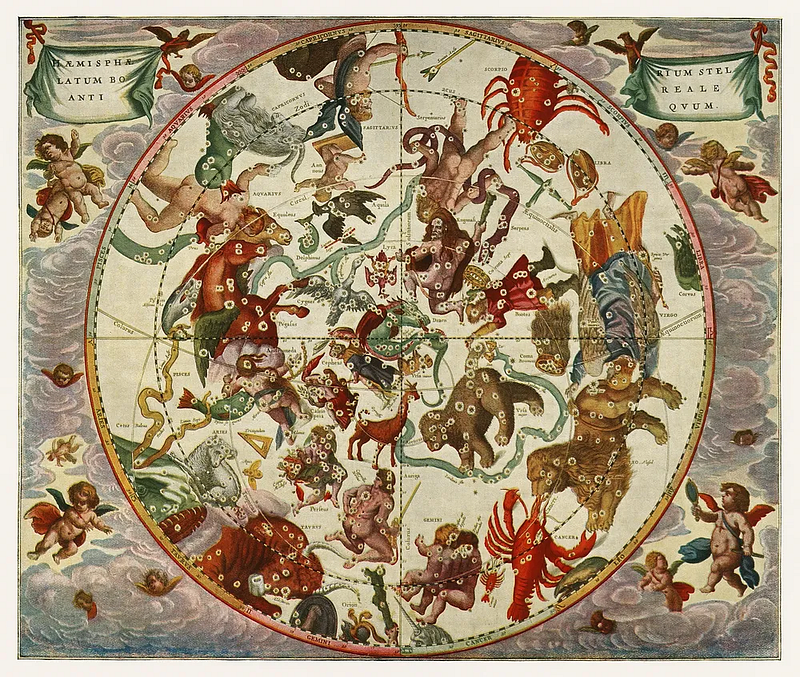Mapping the Fantastic
Let’s talk about maps and landscapes in fantasy and science fiction

Landscape is incredibly important as an organizing structure.
— Dr. Emily Lethbridge (professor of Norse literature)
In the past, many famous individuals were named for their place of origin before “last names” became common.
The geographical features in our oldest stories helped the audience understand where the stories were taking place, but also connected the reader or listener to that space. The landscapes of the Icelandic Sagas, for instance, were an active example of historical storytelling (filled with anecdotes about the reason a place held a certain name). Ultimately, these locations helped create a “sense of belonging” that helped people begin “feeling [their] way into the landscapes” (Lethbridge).
Ursula K. le Guin pointed this out in a 1984 interview that the beauty of fantasy was that you could alter your map at will, depending on the need of your story as you created it. But, “once you’ve decided that the islands are that far apart, that’s it. The map is drawn. You have to adjust to it as if it were a reality. And it is” (McCaffery and Gregory, 75).
Dr. Emily Lethbridge, a well-known professor of Norse literature, has pointed out that “[l]andscape is incredibly important as an organizing structure.” We figure out where we are in a story, we orientate ourselves within the fiction, through the landscape that is described within the fiction. This makes things interesting with forms of fiction where the landscape is vast or incomprehensible (like much interstellar-scale science fiction), or when the fiction has to bend to the needs of the plot. As Joe Straczynski, creator of Babylon 5, put it when asked how fast White Stars (a type of spaceship in his setting) travel: “They travel at the speed of plot.”
In her Hainish works, which take place in a vast loosely connected stellar expanse, Ursula K. le Guin overcame this issue instinctually. She explained that she didn’t know why, but she’d been developing her science fiction stories based purely on depth of time, not geography. There’s “no geography at all between the worlds in those books; there’s only time. The only thing that’s interesting is when each book happened” (McCaffery and Gregory, 75).
The fictional maps' scholar Johnathan Crowe highlights this difference between fantasy and science fiction maps well, stating that maps in sci-fi are “subject to a much different calculation” than fantasy maps. Whether they even appear at all is often in question, and when they do, these sci-fi maps are often either apocrypha that may never have been specifically intended for the reader, or are essentially copies of the fantasy map style, highlighting some area of local geography where the immediate story takes place (part of a planet, usually, or perhaps the hallways of a spaceship).
We start to see some space maps alongside the work of writers like Tobias Buckell and Louis McMaster Bujold — where the limitations in how interstellar travel works within their sci-fi galaxies offer a convenient mapping opportunity. Since the locations in their stories are connected by “wormhole networks,” these can be traced as single lines between the various planetary systems. Other maps, like those created for the television series Firefly and Battlestar Galactica, showcase detailed planetary systems rendered in gorgeous color and detail… but, as Crowe points out, these were created after the fact by the production companies, not built within the stories.
One of the maps that fascinated me the most, and first clued me in to the potential of science fiction maps to provide their own unique take on geography in that genre, were those simple sketches found in Vernor Vinge’s work.
In his Zones of Thought series, Vinge creates this incredible concept of different layers of natural physical law within the galaxy. What we, here on Earth, see as the absolute law of physics, changes in the higher zones. So, down here in the “Slow Zone” we’re limited to sub-light speeds and communications, and true sentient A.I. is impossible. But, up one Zone, a little farther physically from the density of the galaxy, these fundamental laws change. Suddenly, FTL is possible, and vast A.I. intelligences can take shape and form. What’s really fun, and an important aspect of these stories, is how the technology of the higher zones literally dubs down as it goes deeper into the lower Zones. A species that’s basically godlike in the highest Zone would, if it descended, find itself regressing — to the point where it might simply cease to exist at all if whatever advanced systems keeping it alive were incompatible with the physical laws of the lower zones.
To aid in conceiving in this, Vinge includes a simple sketched map in his book A Fire Upon the Deep that showcases how the zones work in the 3D-space of a galaxy. We readers get to follow the course that the main characters take, through these zones, and can easily picture the distances (despite that the real distances would be far vaster than we’d ever experience outside our imagination). This is one of my favorite science fiction maps because it boldly offers 3D space, storytelling depth, a travel route for the characters… and it does it all in a sort of simple style reminiscent of what we’re used to in fantasy maps.
McCaffery, Larry, and Sinda Gregory. “An Interview with Ursula Le Guin.” The Missouri Review, vol. 7, no. 2, Jan. 1984, pp. 64–85, https://doi.org/10.1353/mis.1984.0004.
Maps in Science Fiction. https://www.jonathancrowe.net/articles/maps-in-science-fiction/. Accessed 15 Sept. 2022.
“Landscapes, place-names and Iceland: Interview with Dr. Emily Lethbridge.” Stúdentablaðið, https://studentabladid.is/efni/2022/5/2/landscapes-place-names-and-iceland-interview-with-dr-emily-lethbridge. Accessed 27 Oct. 2022.
